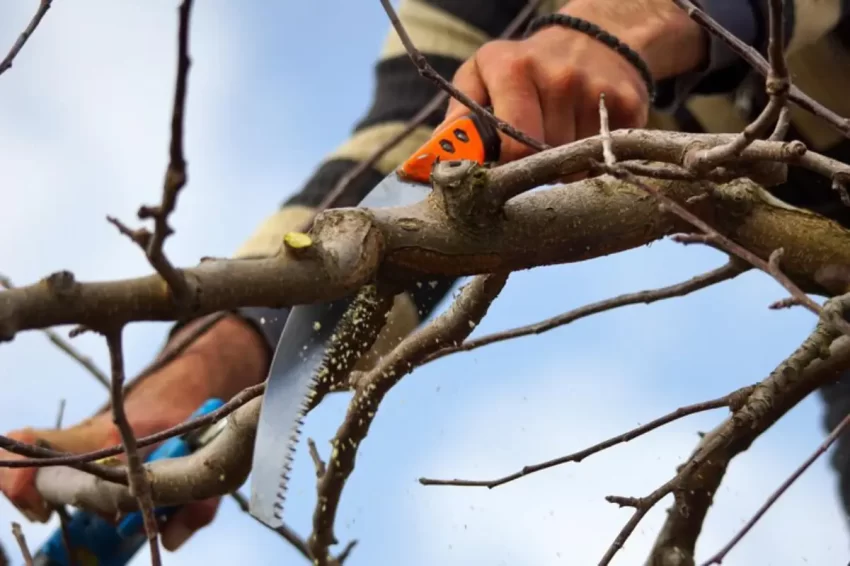Sustainable tree care extends beyond mere maintenance; it encompasses practices that ensure the longevity and health of trees while preserving the environment’s delicate balance. In our current era, where urban expansion often threatens greenery, tree care has become essential to environmental stewardship.
Adopting sustainable practices is paramount for residents in California and similar regions, where urban forestry plays a crucial role in urban planning and climate regulation. When collaborating with a reputable tree care company Tiburon, CA, individuals emphasize approaches that are not only effective but also environmentally responsible. By doing so, they contribute to a sustainable future where urban spaces remain vibrant and ecologically sound.
Techniques such as mulching, proper pruning, and integrated pest management help maintain tree vitality without compromising ecological integrity. These practices also enhance biodiversity, improve air quality, and reduce urban heat island effects. Ultimately, sustainable tree care fosters a healthier coexistence between urban development and nature.
Why Sustainable Practices Matter
The importance of sustainable tree care practices cannot be overstated. Trees, one of nature’s most versatile resources, play a critical role in sequestering carbon—a significant contributor to climate change. They also provide oxygen, support biodiversity, and create habitats for countless species. Actions towards sustainability ensure these invaluable ecological benefits continue for future generations.
The Environmental Protection Agency emphasizes that properly maintained urban trees greatly enhance air quality by filtering pollutants and releasing oxygen. Additionally, sustainable practices can help reduce the effects of urban heat islands, which occur when urban or metropolitan areas become significantly warmer than surrounding rural regions due to human activities and changes in the landscape.
Common Sustainable Techniques
Sustainable tree care requires several methods, each intended to meet the unique requirements of various ecosystems. Mulching, which includes spreading organic material around trees to maintain soil moisture and supply vital nutrients, is one highly advised technique. The unsustainable use of artificial fertilizers, which can upset regional ecosystems, contrasts sharply with this natural method. Using native plant species is another crucial tactic.
Artificial interventions are less necessary because these plants naturally adapt to the local environment and pests. Additionally, by directing water straight to the roots of the trees, appropriate watering techniques like drip irrigation can reduce water waste. These actions all help create a more sustainable and healthy environment.
Pruning for Sustainability
Pruning is not merely a cosmetic procedure but a fundamental aspect of tree health and sustainability. Through strategic pruning, tree branches are trimmed to promote better air circulation and sunlight penetration, crucial factors for reducing disease incidence.
By removing dead or diseased branches, pruning fosters healthier growth, prolonging the tree’s lifecycle. Regular pruning enhances a tree’s structural integrity, enabling it to withstand harsh weather conditions. This proactive measure safeguards individual trees and contributes to urban forests’ overall resilience and sustainability.
Integrated Pest Management
The environmentally friendly strategy known as Integrated Pest Management (IPM) strongly emphasizes managing pest populations using sustainable means. IPM emphasizes biological controls like natural predators and biocontrol agents rather than chemical pesticides, which can damage non-target animals and the ecosystem.
IPM reduces reliance on synthetic chemicals by promoting a balanced ecology where pests are naturally controlled, which aligns with sustainable goals. According to USDA Forest Service recommendations, this approach is a progressive approach to tree care that supports sustainability and environmental health.
Soil Health and Composting
At the core of sustainable tree care is maintaining and enhancing soil health. Healthy soil is the foundation for robust tree growth, resilience to pests, and long-term sustainability. Composting is an effective way to enrich soil, adding essential nutrients while reducing the need for chemical fertilizers.
This process involves recycling organic waste to create nutrient-rich humus to rejuvenate depleted soils. Composting supports the ecosystem by promoting soil health and reinforcing the natural cycles, sustaining tree growth and vitality.
Community Involvement and Education
Community involvement serves as the cornerstone of sustainable tree practices. Educating communities about the benefits of trees and how to care for them can have a transformative impact on urban and rural landscapes.
Communities can foster appreciation and knowledge of sustainable tree care by involving schools, neighborhood organizations, and local governments. Active participation equips individuals with the skills necessary for effective care and instills a sense of responsibility toward environmental conservation. Educational initiatives encourage collective action, leading to more sustainable and greener communities.
Conclusion
Sustainable tree care is more than a set of techniques—it is a long-term commitment to nurturing the environment and preserving trees’ vital role in our ecosystems. By embracing practices such as strategic pruning, integrated pest management, composting, and using native species, individuals and communities contribute to healthier urban and rural landscapes.
These efforts support tree longevity and biodiversity, mitigate climate change effects, and promote ecological balance. Importantly, fostering community engagement and education ensures sustainable tree care becomes a shared responsibility rooted in awareness and action. As environmental challenges continue to grow, adopting sustainable practices will remain essential in safeguarding green spaces for future generations. Through mindful care and collective stewardship, we can ensure our trees thrive—and, with them, the planet.

